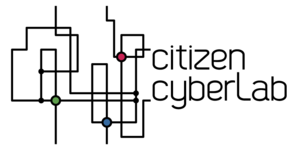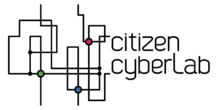The educational technology and digital learning wiki
Jump to navigation
Jump to search
|
|
| Line 6: |
Line 6: |
| |field_project_open=Yes | | |field_project_open=Yes |
| |field_subject_areas=Natural sciences | | |field_subject_areas=Natural sciences |
| |field_cs_subject_areas=medicine | | |field_cs_subject_areas=biology/medicine/neuroscience |
| |field_fields_of_science=Neurology | | |field_fields_of_science=Neurology |
| |field_project_description=EyeWire is a game where volounteers map the 3D structure of neurons. By playing EyeWire, they help map the retinal connectome and contribute to the neuroscience research conducted by Sebastian Seung's Computational Neuroscience Lab at MIT. The connectome is a map of all the connections between cells in the brain. Rather than mapping an entire brain, we’re starting with a retina. | | |field_project_description=EyeWire is a game where volounteers map the 3D structure of neurons. By playing EyeWire, they help map the retinal connectome and contribute to the neuroscience research conducted by Sebastian Seung's Computational Neuroscience Lab at MIT. The connectome is a map of all the connections between cells in the brain. Rather than mapping an entire brain, we’re starting with a retina. |
| Line 53: |
Line 53: |
|
| |
|
| Artificial Intelligence (AI) is used in the game to help volunteers complete it. | | Artificial Intelligence (AI) is used in the game to help volunteers complete it. |
|
| |
| {{Free text}} | | {{Free text}} |
Latest revision as of 22:48, 10 October 2013
Cs Portal > List of citizen science projects > EyeWire - (2013/09/25)
THIS PAGE DESCRIBE A CITIZEN SCIENCE PROJECT
Start date : 2012/12/10
- Beta start date : N/A
- End date : Still open.
⇳ Description
EyeWire is a game where volounteers map the 3D structure of neurons. By playing EyeWire, they help map the retinal connectome and contribute to the neuroscience research conducted by Sebastian Seung's Computational Neuroscience Lab at MIT. The connectome is a map of all the connections between cells in the brain. Rather than mapping an entire brain, we’re starting with a retina.
➠ Purpose
Identify and Maps all the neurons in the retina.
? Research question
MAIN TEAM LOCATION
Loading map...
{"minzoom":false,"maxzoom":false,"mappingservice":"leaflet","width":"300px","height":"270px","centre":false,"title":"","label":"","icon":"","lines":[],"polygons":[],"circles":[],"rectangles":[],"copycoords":false,"static":false,"zoom":false,"defzoom":14,"layers":["OpenStreetMap"],"image layers":[],"overlays":[],"resizable":false,"fullscreen":false,"scrollwheelzoom":true,"cluster":false,"clustermaxzoom":20,"clusterzoomonclick":true,"clustermaxradius":80,"clusterspiderfy":true,"geojson":"","clicktarget":"","imageLayers":[],"locations":[{"text":"","title":"","link":"","lat":42.3591524,"lon":-71.0933119,"icon":""}],"imageoverlays":null}
Massachusetts Institute of Technology - 77 Massachusetts Ave, Cambridge, États-Unis
CONTRIBUTION TYPE: data analysis
PARTICIPATION TYPOLOGY: crowdsourcing
GAMING GENRE NONE
GAMING ELEMENTS: NONE
◉ Tasks description
The player's task is to select the areas that the AI missed, thus improving the trace of the neuron. In the interface, a three-dimensional view shows the trace of the neuron through the volume, while the player can scroll up and down in the two-dimensional slices to follow the path. The player clicks on areas in the slices to add them to the trace. The AI automatically fills in the parts of the neuron that it detects are part of the player's clicked area. Once the player has decided the task is complete, the player submits the task and is presented with another task.
⤯ Interaction with objects
▣ Interface
- Data type to manipulate: 3D manipulation
- interface enjoyment: cool/attractive
- Interface usability: somewhat difficult to use
GUIDANCE
- Tutorial: ✓
- Peer to peer guidance: ✓
- Training sequence: Somewhat
FEEDBACK ON
- Individual performance: ✓
- Collective performance: Somewhat
- Research progress: Somewhat
❂ Feedback and guidance description
COMMUNITY TOOLS
- Communication: website, blog, forum, wiki
- Social Network: Twitter, Facebook, Linkedin
- Member profiles:: minimal
- Member profile elements: badges, activity metrics
⏣ Community description
- Community size (volounteers based) 80 000
- Role:
- Interaction form:
- Has official community manager(s): N/A
- Has team work N/A
- Other: Community can make suggestions in threads on the discussion forum which project staff look at and respond to accordingly.
- Community led additions:
Other information
PROJECT
Url:http://eyewire.org/
Start date: 2012/12/10
End date: Still open
TEAM
Official team page:http://wiki.eyewire.org/en/Who_we_are_and_what_we_do.
Leader: Sebastian Seung's
Contact: support@eyewire.org
Main location: Massachusetts Institute of Technology - 77 Massachusetts Ave, Cambridge, États-Unis
PROJECT DEFINITION
Subject
Natural sciences > Neurology (biology/medicine/neuroscience)
Description
EyeWire is a game where volounteers map the 3D structure of neurons. By playing EyeWire, they help map the retinal connectome and contribute to the neuroscience research conducted by Sebastian Seung's Computational Neuroscience Lab at MIT. The connectome is a map of all the connections between cells in the brain. Rather than mapping an entire brain, we’re starting with a retina.
Purpose.
Identify and Maps all the neurons in the retina.
.
ABOUT PARTICIPANT TASKS
Tasks description.
The player's task is to select the areas that the AI missed, thus improving the trace of the neuron. In the interface, a three-dimensional view shows the trace of the neuron through the volume, while the player can scroll up and down in the two-dimensional slices to follow the path. The player clicks on areas in the slices to add them to the trace. The AI automatically fills in the parts of the neuron that it detects are part of the player's clicked area. Once the player has decided the task is complete, the player submits the task and is presented with another task.
.
| Grey typology |
Participation typology |
Contribution type: |
|
|
| Computing: |
NO |
Thinking: |
YES |
| Sensing: |
NO |
Gaming: |
YES |
|
|
|
| Crowdsourcing |
☑ |
Distributed intelligence |
☐ |
| Participatory science |
☐ |
Extreme citizen science |
☐ |
| Science outreach |
☐ |
| |
|
| Data collection |
☐ |
| Data analysis |
☑ |
| Data interpretation |
☐-------- |
|
| Gaming |
| Genre: other |
Gaming elements: |
| Interface |
| Data type to manipulate: 3D manipulation |
interface enjoyment: cool/attractive
Interface usability: somewhat difficult to use |
Member profiles::minimal
Member profile elements: badges, activity metrics |
ABOUT GUIDANCE AND FEEDBACK
| Guidance |
Feedback on |
| Tutorial and documentation: |
YES |
| Training sequence: |
SOMEWHAT |
| Peer to peer guidance: |
YES |
|
| individual performance: |
YES |
| collective performance: |
Somewhat |
| research progress: |
YES |
|
.
| Tools |
News & Events |
|
Communication: website, blog, forum, wiki
Social Network: Twitter, Facebook, Linkedin
|
Main news site: http://blog.eyewire.org/
Frequency of project news updates: less than weekly
Type of events: MeetUps, other
Frequency of events : 4
|
| Community description |
|
Community size (volounteers based): 80 000
Role:
Interaction form:
Has official community manager(s): N/A
Has team work N/A
|
Other information about community: Community can make suggestions in threads on the discussion forum which project staff look at and respond to accordingly.
Community led additions:
OTHER PROJECT INFORMATION
Photo.jpg
Yes
[[has completion level::Medium]
http://wiki.eyewire.org/en/Who we are and what we do.
Massachusetts Institute of Technology - 77 Massachusetts Ave, Cambridge, États-Unis
support@eyewire.org
Yes
Neurology
Natural sciences
biology/medicine/neuroscience
Identify and Maps all the neurons in the retina.
EyeWire
The player's task is to select the areas that the AI missed, thus improving the trace of the neuron. In the interface, a three-dimensional view shows the trace of the neuron through the volume, while the player can scroll up and down in the two-dimensional slices to follow the path. The player clicks on areas in the slices to add them to the trace. The AI automatically fills in the parts of the neuron that it detects are part of the player's clicked area. Once the player has decided the task is complete, the player submits the task and is presented with another task.
data analysis
crowdsourcing
3D manipulation, other:
Thinking: yes
Computing: no
Sensing: no
Gaming: yes
other
cool/attractive
somewhat difficult to use
yes
yes
strong
yes
somewhat
yes
minimal
badges, activity metrics
N/A
website, blog, forum, wiki
Twitter, Facebook, Linkedin
MeetUps, other
4
http://blog.eyewire.org/
80 000
less than weekly
Community can make suggestions in threads on the discussion forum which project staff look at and respond to accordingly.
N/A
Medium
Assessment:
- Progression isn’t very clear, overall neurone you’ve mapped isn’t shown. Accuracy isn’t clear either as users don’t know if they’ve gotten it right. Volunteers don’t feel like part of the team but like unpaid interns.
Other Info:
- Since President Obama announced the BRAIN initiative, the project have used this very well in their marketing to stress the importance of their aims. They use bold statements like “Obama wants to map the brain. You can help by playing EyeWire.”
Artificial Intelligence (AI) is used in the game to help volunteers complete it.
Bibliography



